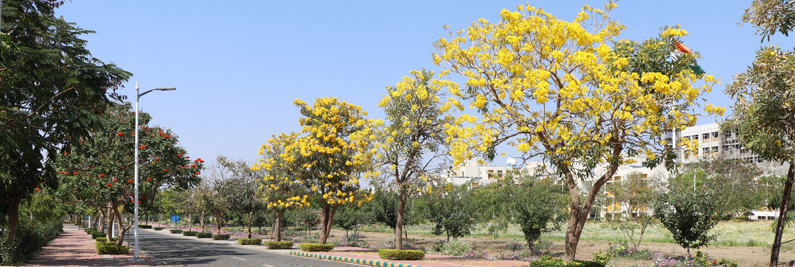Best Books to Read in 2023
Best Books to Read in 2023 Are you a bookworm or a bibliophile, if yes, then this is the ...
IISER Bhopal researchers from the MetaBioSys Group have for the first time constructed a high-quality genome assembly to decipher the genetic secrets of India’s national bird.
In an earlier study, the research team had constructed the first draft assembly of this bird species to perform a comprehensive genome-wide analysis, comparing the peacock genome with those of five other bird species.
 The recent findings of IISER Bhopal have been published in the journal Heliyon. The paper has been co-authored by Dr. Vineet Sharma, Associate Professor, Department of Biological Sciences, and his research scholars Mr. Abhisek Chakraborty, Mr. Samuel Mondal, and Ms. Shruti Mahajan from IISER Bhopal.
The recent findings of IISER Bhopal have been published in the journal Heliyon. The paper has been co-authored by Dr. Vineet Sharma, Associate Professor, Department of Biological Sciences, and his research scholars Mr. Abhisek Chakraborty, Mr. Samuel Mondal, and Ms. Shruti Mahajan from IISER Bhopal.
The ornate features of the peacock’s tail have always fascinated scientists and nature enthusiasts. Charles Darwin expressed bewilderment over the paradoxical grand display of the male peafowl, which made it more vulnerable to predators.
Darwin resolved this puzzle with the theory of sexual selection, suggesting that such ornamental traits play a crucial role in attracting mates and enhancing reproductive success.
Despite such understanding, the underlying genetic basis for these spectacular birds has always remained a mystery, say IISER Bhopal researchers.
In a recent study, the IISER Bhopal team focused on the Blue Peafowl, also known as the Indian Peacock, native to the Indian subcontinent, and the Green Peafowl, found in Southeast Asia.
These two species of birds were chosen because despite being the only two species from the Pavo genus, the Blue Peafowl is classified as a species of “Least Concern,” while the Green Peafowl faces endangerment due to a decline in population size, say IISER Bhopal researchers.
Also read – The ultimate guide to becoming an IAS officer
They sought to understand the evolutionary and genetic reasons for their differential adaptability that makes the Blue Peafowl less endangered than the Green.
 Genes
GenesResearchers found that genes related to nervous system development, immunity, and skeletal muscle development have undergone adaptive evolution in both bird species.
However, the Blue Peafowl has more pronounced adaptive evolution, possessing a higher number of expanded gene families, segmentally duplicated genes, species-specific gene clusters, and genes with evolutionary signatures.
Dr. Vineet K. Sharma, Associate Professor, Department of Biological Sciences, IISER Bhopal, said their findings highlight the distinct genomic divergence between the two Asian peafowl species and provide valuable genomic clues to explain their contrasting population sizes.
Further, Dr. Vineet K. Sharma added the green peafowl population appears to be more vulnerable to the consequences of habitat loss and human exploitation for food and commercial use.
These activities have had a greater impact on their numbers, as they are less tolerant to human disturbances. The reduction in their population has resulted in decreased gene flow, increased inbreeding, and lower genetic diversity, ultimately raising the risk of extinction for this species, said Dr Vineet from IISER Bhopal.
The words of Ruskin Bond, “I do not believe that any peacock envies another peacock his tail, because every peacock is persuaded that his own tail is the finest in the world,” capture the essence of the peacock’s extraordinary allure and our fascination with it.
The study conducted by the IISER Bhopal researchers has brought us one step closer to unravelling the genetic basis for the enigmatic bird’s characteristics, say IISER Bhopal researchers.
The research not only deepens our appreciation for the peacock’s ornamental allure but also broadens our knowledge of evolutionary biology and the genomic underpinnings of nature’s wonders.
 About IISER Bhopal
About IISER BhopalEstablished by the Ministry of Education (then Ministry of Human Resource & Development), Government of India, in 2008, IISER Bhopal is the youngest of the first five IISERs.
In a decade, the Institute has received several distinctions, duly carving out its own position in the national and international arena.
With a vision to provide high-quality education to students and contribute to society through its research, IISER Bhopal is the first IISER to have been declared by the Ministry of Education for project completion.
IISER Bhopal is continuously consolidating its position in the National and International rankings and has secured 60th place in The National Institutional Ranking Framework, Ministry of Education, Government of India.
Along with this, IISER Bhopal has gained rank 281-290 in the overall category of the QS Asia Ranking 2023. The Institute has also been ranked 57th (National Rank, out of 70 in the 1500 Institutes) in the Times Higher Education 2023 World Ranking.
S Vishnu Sharmaa now works with collegechalo.com in the news team. His work involves writing articles related to the education... (Full bio)

Best Books to Read in 2023 Are you a bookworm or a bibliophile, if yes, then this is the ...

In the exhilarating journey of 10 Proven Memorize Techniques for Students learning, memory is your trusty companion. Whether ...

Top 20 toughest exams in world is about exams in the world that required very hard work to ...

Top 20 toughest exams in India - Exams are the perhaps most toughest moments for any student. A ...

Top 20 Colleges of DU Getting admissions to the top 20 colleges of DU is a dream for every ...

Top 20 NITs of India - Amongst the 31 NITs in India, today, we are talking ...

Here are the Top 12 Artificial Intelligence in Mumbai. Artificial intelligence (AI) refers to the simulation of human ...

As you stand on the Best Science Courses after 12th academic journey, the realm of science beckons, offering ...
Millions of students have entrusted CollegeChalo to facilitate their seamless and smooth admission process to their dream colleges and universities. With CollegeChalo, you can gain a competitive edge by easily accessing exam and course details to stay ahead of the admission journey. What are you waiting for?
Search your dream college